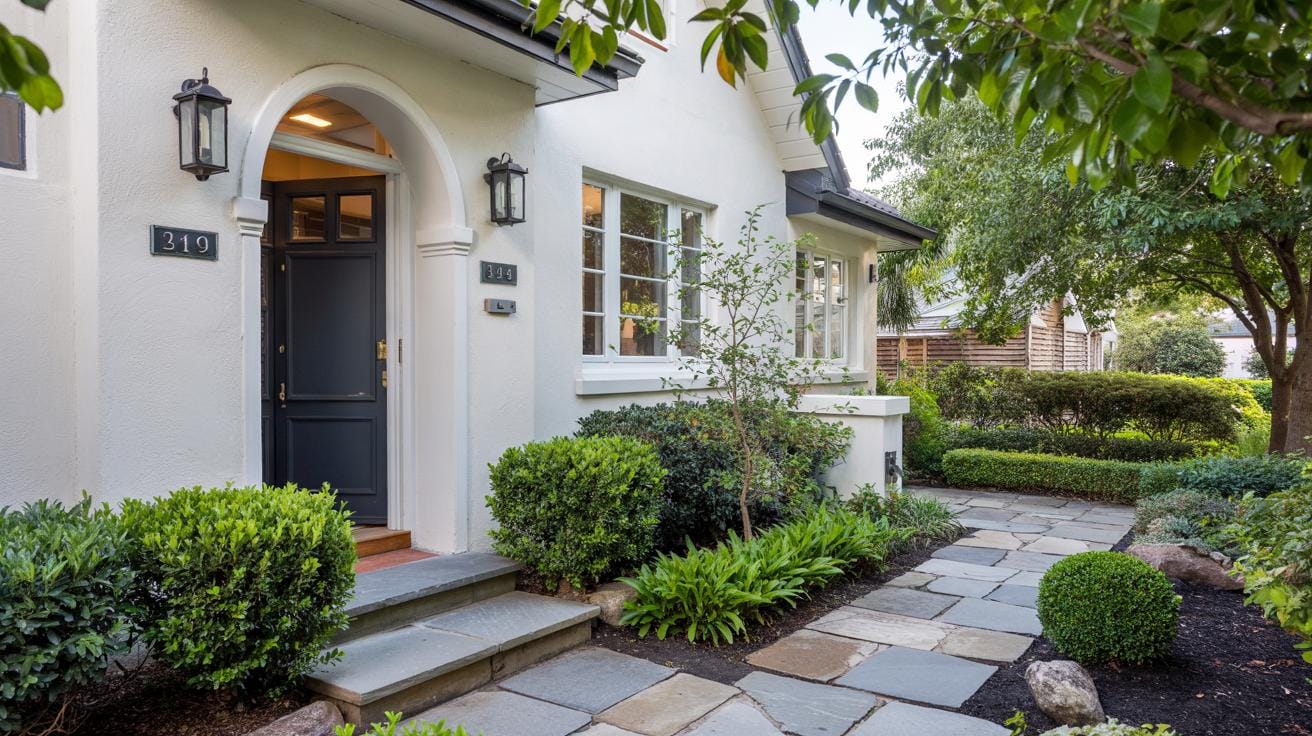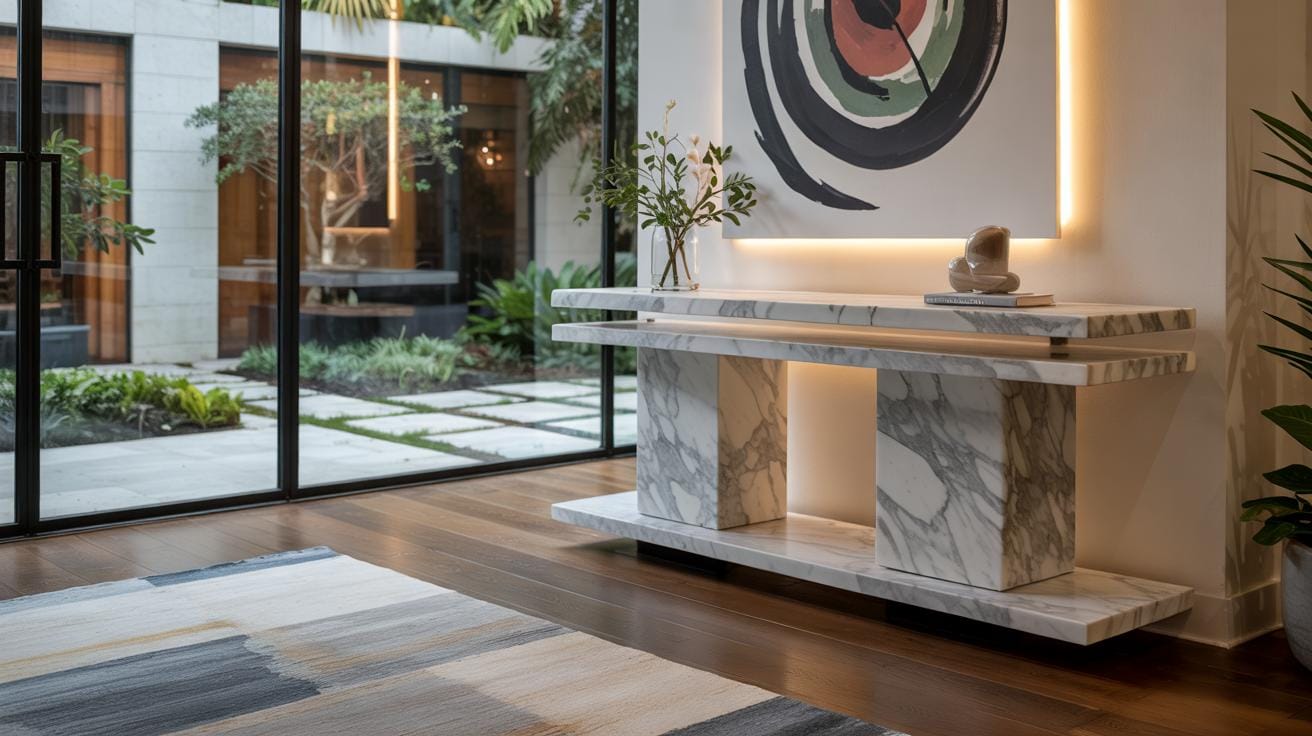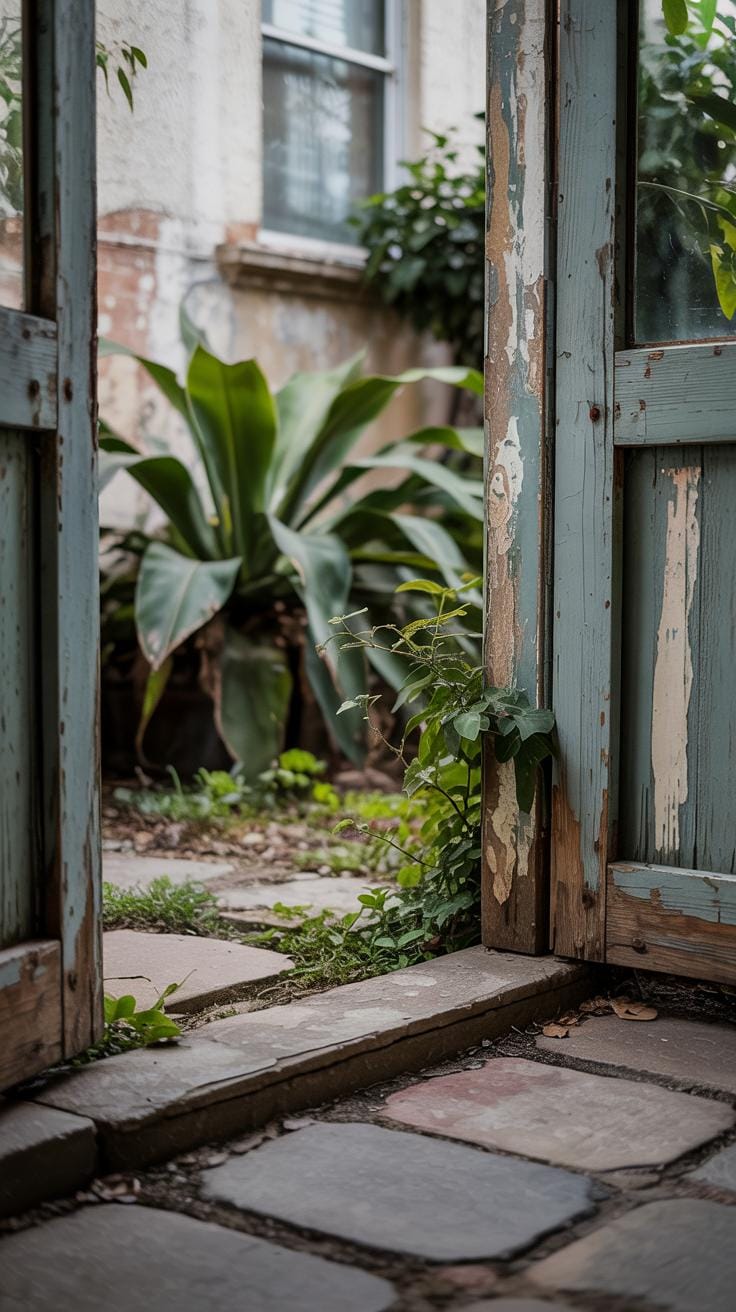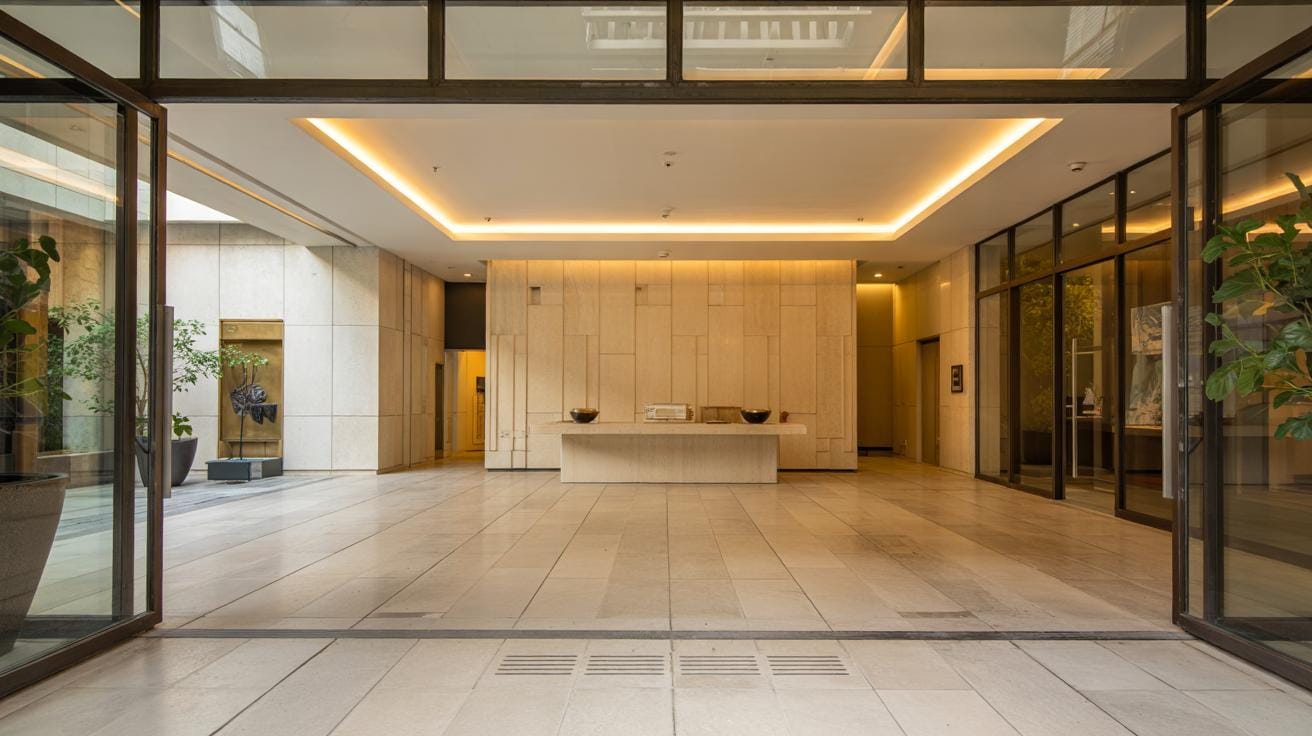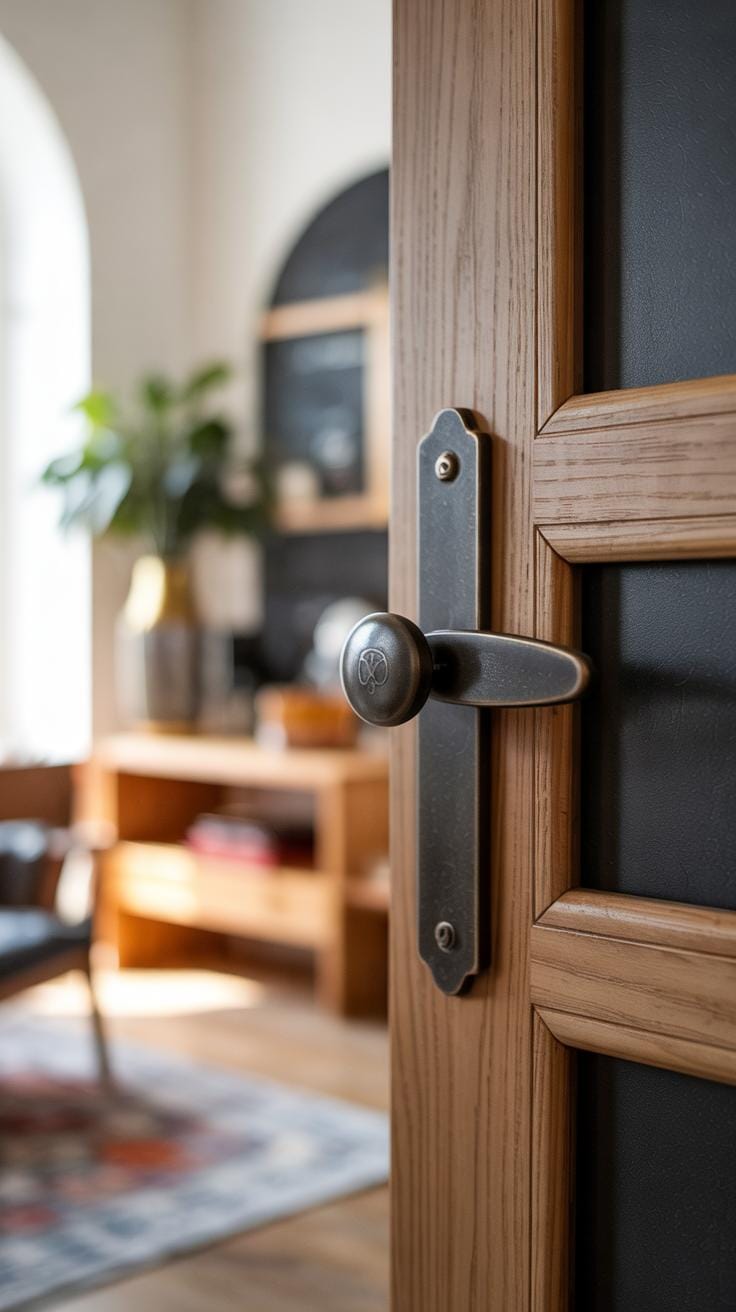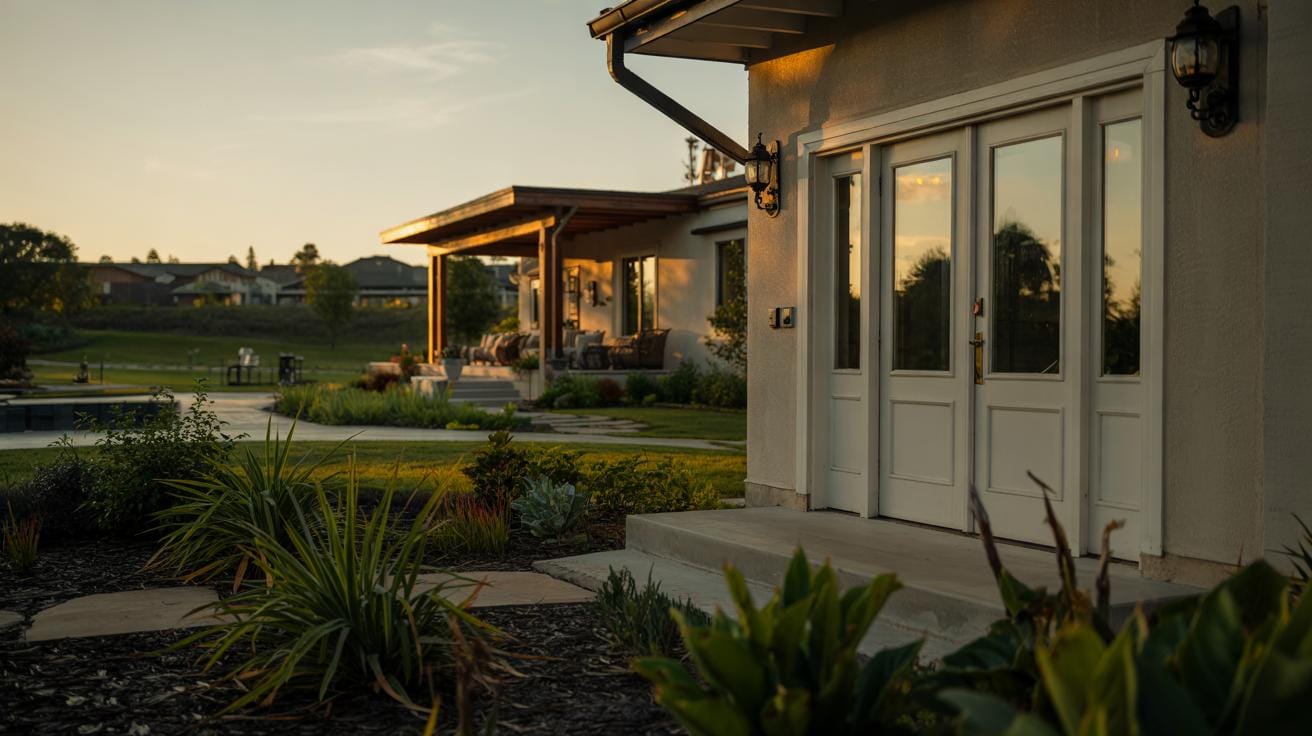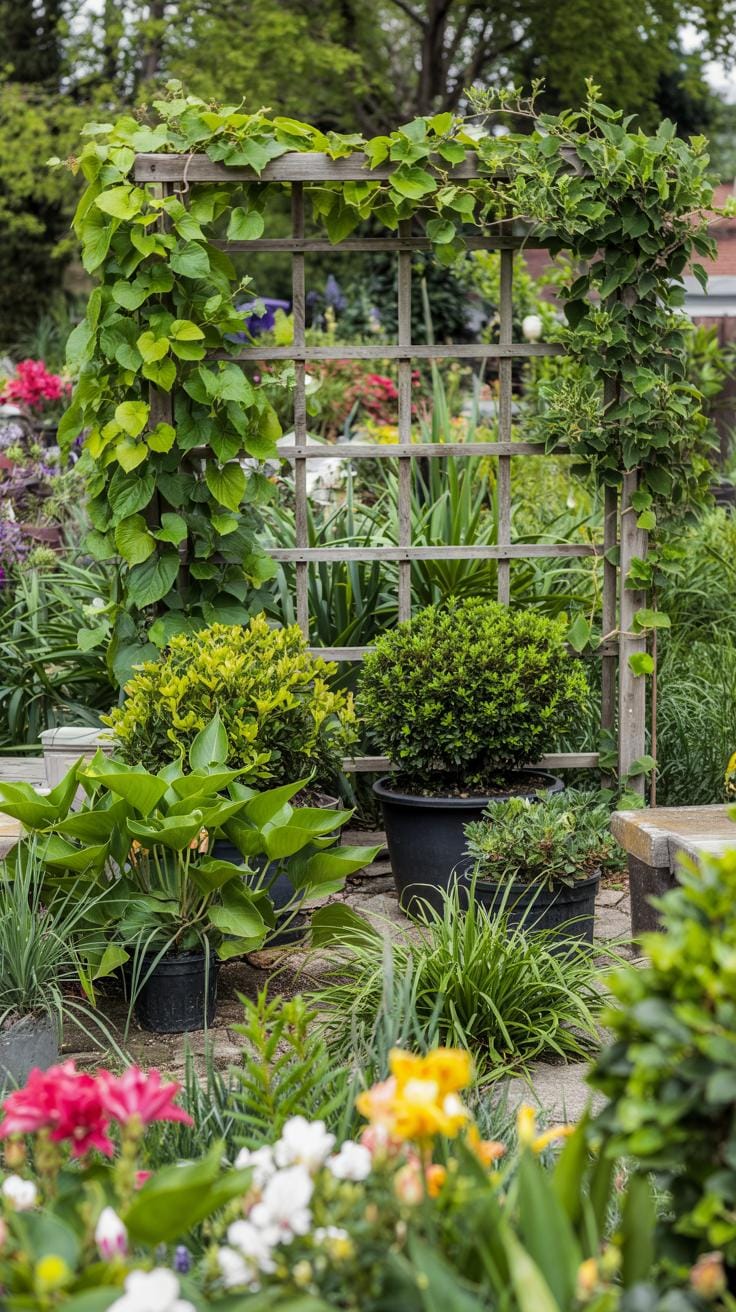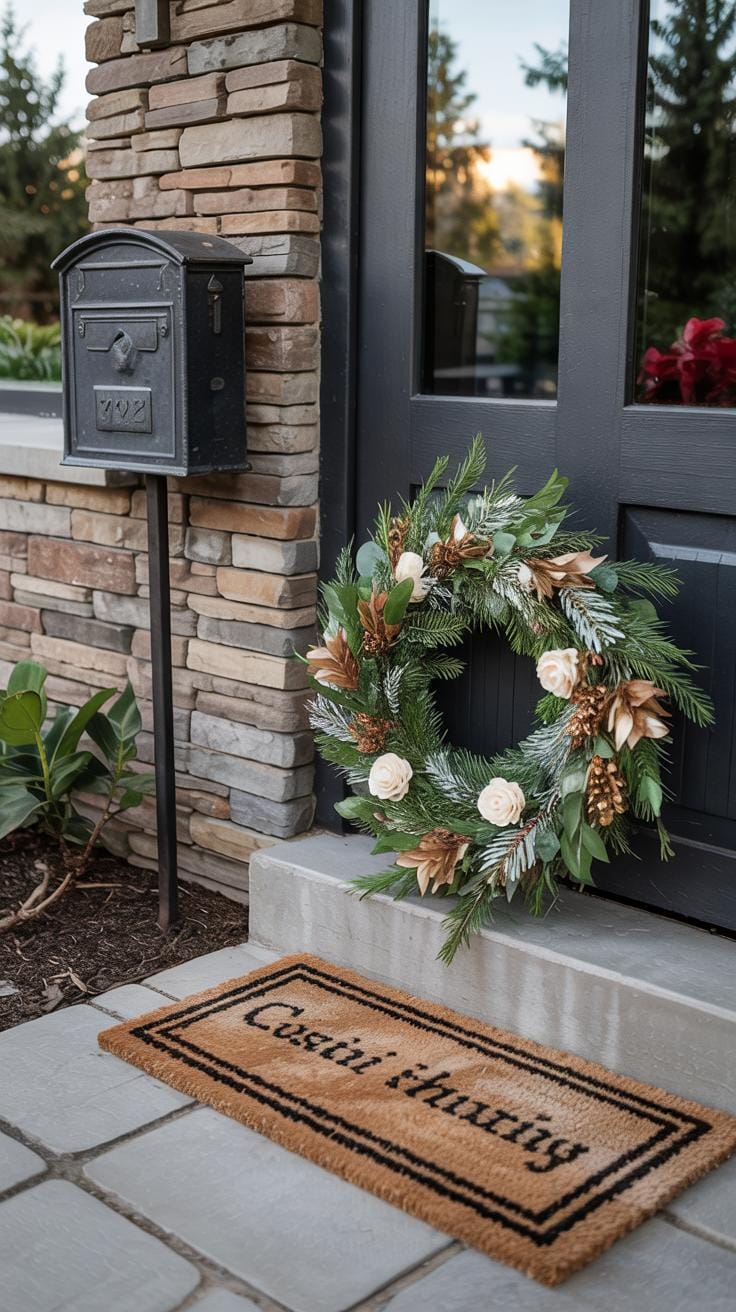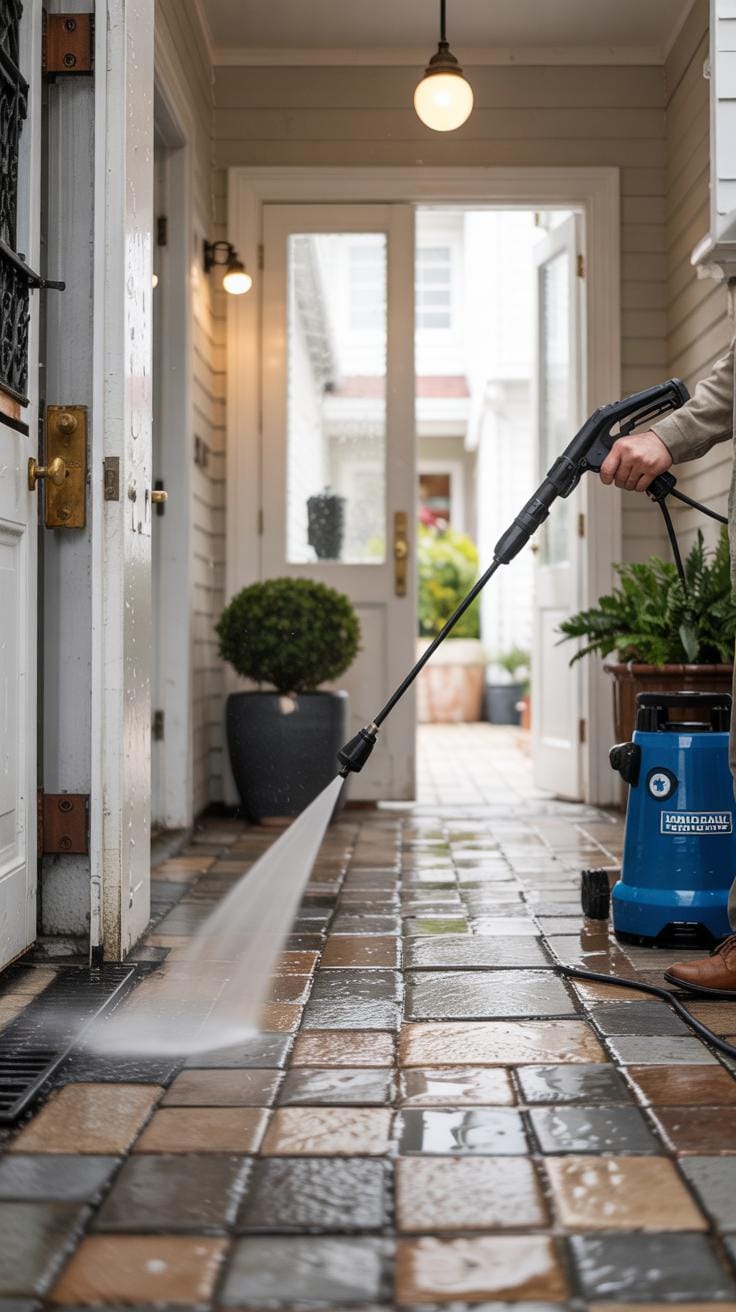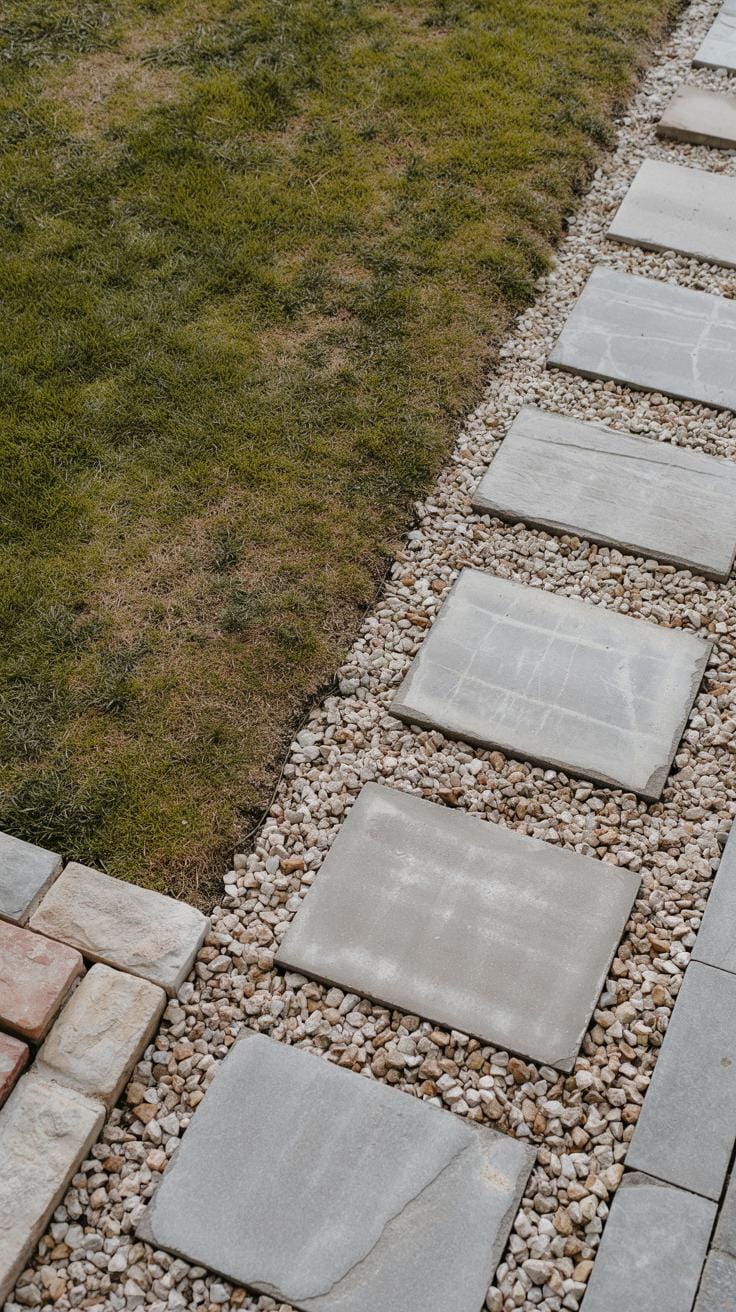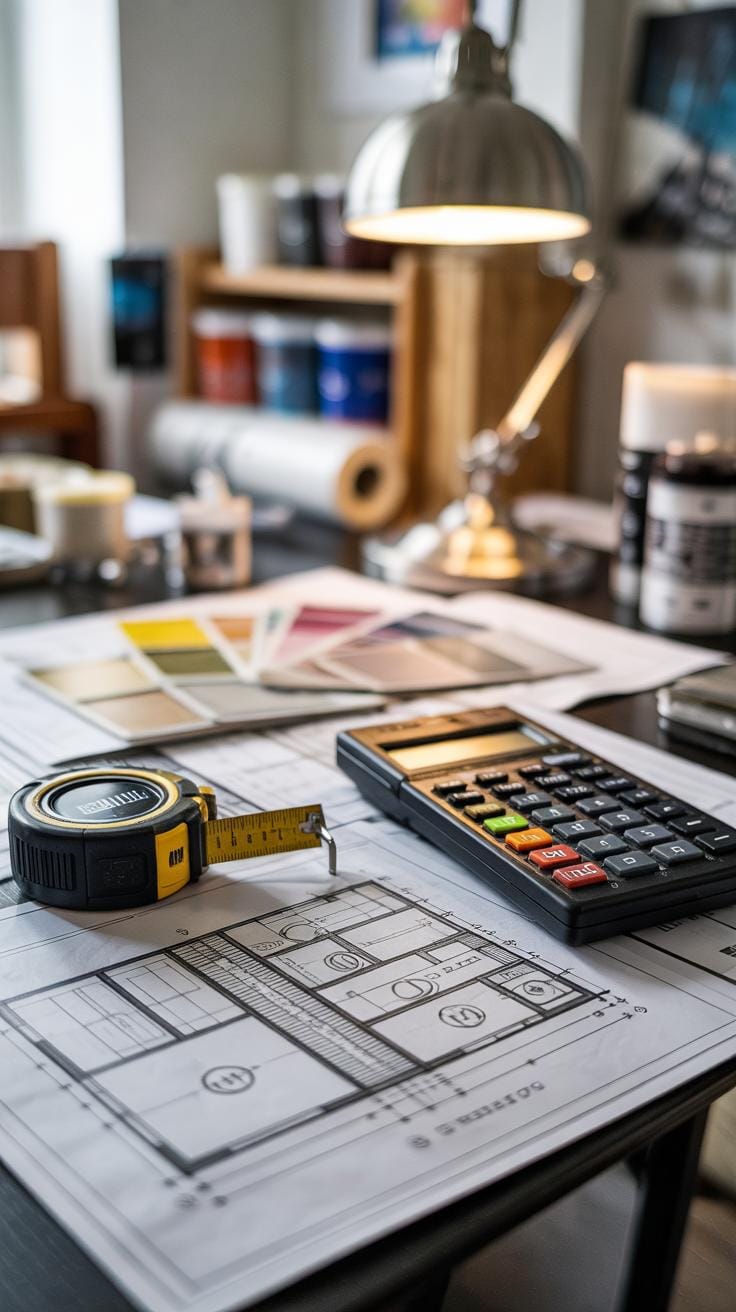Introduction
Your home’s entrance sets the tone for visitors and passersby. A thoughtfully designed entrance increases your home’s value and invites positive energy. Simple updates can make a big difference in your home’s appearance.
This article shares actionable ideas for renovating your home entrance. You will learn how to create a welcoming environment and enhance curb appeal. By making informed decisions, you can improve your home’s exterior effectively and affordably.
Understanding Home Entrance Importance
Your home entrance creates the first impression for anyone arriving at your house. It shows how you care about your property and welcomes guests. A clean, inviting entrance makes visitors feel comfortable and sets a positive mood before they even step inside.
When your entrance looks tidy and organized, it sends a message of pride in ownership. This affects how people view your entire home. Visitors often judge a house based on the entrance’s appearance, linking it to what they expect inside.
Beyond visual appeal, a well-kept entrance provides practical benefits like improved security and easier access. It also reflects your personal style and attention to detail. When buyers see an appealing entrance, they imagine themselves living there, which adds real value.
The First Impression Counts
Visitors notice your home entrance first. It shapes their expectations before they enter. An inviting door, neat walkway, and good lighting tell people you maintain your home well.
Have you thought about what your entrance says to guests? A worn door or cluttered porch might make visitors feel uneasy or less welcomed. Bright lighting and fresh paint can change that feeling completely.
The entrance sets the tone for the whole home. It hints at what lies inside and how comfortable and safe that space will be. Taking time to improve your entrance can influence how people remember your home.
Value Addition through Entrance
Improving your entrance can increase your home’s market value. Simple upgrades like a modern door, new hardware, or updated lighting appeal to buyers looking for a move-in-ready home.
Real estate agents often say the entrance can sway a buyer’s decision. A neat, attractive entrance suggests the rest of the house is cared for, reducing concerns about costly repairs.
Have you considered how much value a fresh coat of paint or a stylish doormat adds? Small changes here deliver big returns by attracting interest and speeding up the sale process.
The entrance represents your home’s personality and condition. Investing in it makes financial sense for both daily enjoyment and future sales.
Evaluating Your Current Entrance
Start by examining your front door closely. Look for signs of wear, peeling paint, or damage to the frame. Check if the door fits well and closes properly. Your lighting setup also needs a review. Are the fixtures working? Do they highlight the entrance effectively during the evening? Proper lighting enhances safety and appeal.
Take a walk around the entryway. Notice any overgrown plants or dead patches in the landscaping that may distract visitors. The cleanliness of your porch or steps plays a big role too. Dirt, leaves, or debris can make the entrance feel neglected.
Ask yourself: Does your entrance invite you inside? What first impression does it create when viewed from the street? Objectivity here gives you a clear picture of what to fix first and helps prioritize your renovation.
Checklist for Entrance Condition
Use this simple checklist to assess your entryway:
- Door surface: Is the paint or finish intact?
- Door hardware: Are handles, locks, and hinges functional and clean?
- Lighting: Are all bulbs working? Do fixtures match your home’s style?
- Porch and steps: Are they free of cracks and dirt?
- Landscaping: Is it tidy, trimmed, and well-maintained?
- Doormats and decorations: Are they clean and in good condition?
This list helps you spot problem areas quickly and decide which details need immediate attention or a full update.
Identifying Improvement Areas
Look for parts of your entrance that stand out negatively. For example, a faded door or broken light can catch the eye for the wrong reasons. Determine if issues are small fixes or if replacements make more sense. Think about your budget before starting any work.
Imagine swapping out an old light for a new fixture that suits your home’s style but also saves energy. Or perhaps fresh paint will restore the door’s charm without the cost of a new one. Focus on changes that raise your entrance’s value and feel.
Planning your renovation starts with setting priorities. Which updates will improve curb appeal most? Could a simple cleanup and better lighting be enough? Define clear goals, then create a timeline and budget that fit your needs. This keeps your renovation manageable and effective.
Door and Hardware Updates
Choosing a Front Door that Fits
Your front door sets the tone for your home’s entire entrance. When selecting a door, consider the style of your house. A modern home pairs well with sleek, simple doors made of steel or fiberglass. Traditional homes often look best with wood doors that show natural grain or have classic panel designs.
Material affects durability and maintenance. Steel doors resist dents and weather, while wood offers warmth but may require more care. Fiberglass combines durability with design flexibility, mimicking wood without the upkeep.
Color choice impacts how welcoming your entrance feels. Bold colors like red or blue add personality and can increase curb appeal, but always match your door to your home’s color palette. For example, earth tones suit rustic homes, while bright colors fit coastal or cottage styles.
Ask yourself: Does the door reflect your home’s style and your personality? Will it stand up to local weather? Taking time to choose right improves both curb appeal and satisfaction.
Hardware Enhancements
Upgrading your door hardware refreshes your entrance quickly and adds security. Handles, locks, and hinges come in many finishes such as brushed nickel, oil-rubbed bronze, and polished chrome. Choose a finish that complements your door style and outdoor fixtures.
Quality hardware lasts longer and enhances safety. Look for products with strong construction and secure locking mechanisms. Keyless entry locks and smart locks add convenience without sacrificing security.
Design also matters. A traditional door benefits from classic lever or knob handles, while contemporary doors often pair well with minimalist pulls. Don’t overlook small details like house numbers or door knockers—they contribute to a polished, coordinated look.
Consider how often you use your door and choose hardware that feels comfortable and functions smoothly. Fresh hardware offers a simple update that changes both the look and experience of your entrance.
Enhancing Lighting for Safety and Style
Your home entrance benefits greatly from thoughtful lighting that enhances both safety and curb appeal. Proper lighting discourages unwanted visitors and helps guests find their way after dark. Consider installing fixtures that highlight architectural details while casting enough light to prevent trips or falls. Wall sconces placed on either side of the door create a welcoming frame and add symmetry.
Overhead lights, such as pendant fixtures or flush mounts, provide broad illumination, especially for covered porches. Pathway lights guide visitors along walkways, improving navigation and adding depth to your landscape. Placing lights at different heights creates layers of light, making your entry dynamic and secure. Have you checked how your current lighting highlights your front door or porch at night?
Lighting Types and Placement
Sconces offer direct light and accentuate your doorway. They should be mounted at eye level, around 60 to 66 inches from the ground. Overhead fixtures work best when centered above the door, casting light outward without harsh shadows. Pathway lights spaced evenly along walkways or stairs illuminate the path and enhance safety.
Consider motion-activated lights near corners or darker spots for extra security. Solar pathway lights provide energy savings and easy installation, though they may offer less brightness than wired options. Are your lights positioned to avoid glare while still brightening your path?
Balancing Function and Design
Lighting should be bright enough to keep the entrance safe and functional without overpowering the space. Choose fixtures that complement your home’s style—modern homes suit sleek, minimal designs, while traditional houses pair well with lantern-style lights. Warm white bulbs create a cozy effect without harshness.
Use dimmable lights or multiple light sources to adjust brightness levels as needed. Matching fixture finishes to your door hardware or house trim helps create visual harmony. When selecting bulbs, think about energy efficiency to keep long-term costs low. How can your entrance lighting serve your needs while fitting your design preferences?
Incorporating Landscaping and Greenery
Using plants near your home entrance creates an inviting space and adds natural beauty. Select greenery that stays neat and survives changes in weather to save effort. Think about plants that need little watering or pruning. Such choices make upkeep easier while keeping your entrance looking fresh.
Seasonal plants add color and interest throughout the year. For example, pansies brighten spring, while evergreens keep things lively in winter. Mixing seasonal blooms with hardy shrubs can give your entryway a balanced look with manageable care.
Adding landscaping features like small garden beds or borders can guide visitors toward your door. Consider using mulch or stones to reduce weeds and highlight plant shapes. Would your entrance benefit from a splash of green that fits your home’s style and climate?
Choosing Entrance-Friendly Plants
Pick plants that handle foot traffic and the specific weather near your door. Lavender performs well with little water, and its scent welcomes guests. Boxwood shrubs create tidy, low hedges that need only occasional trimming. Succulents like sedum can survive sunny spots with little care.
For color, geraniums and marigolds tolerate heat and can thrive in pots or garden beds. Hostas do well in shaded areas and only require basic watering. These varieties grow without fuss and keep your entrance neat and inviting.
Designing with Greenery
Use pots or containers to add height and shape near your doorway. A pair of tall plants like dwarf evergreens by the steps can frame the entrance symmetrically. Raised garden beds provide space for layered planting and create a natural pathway.
Edging with stones or metal defines plant spaces and keeps grass from spreading into beds. This clear separation makes your entrance appear organized and cared for. Think about how different shapes and plant sizes can draw eyes toward your front door and enhance its look.
Adding Decorative and Functional
Your home entrance sets the tone for visitors. Choosing the right doormat provides both a welcoming message and practical use by trapping dirt before it enters. Choose mats made of durable materials like coir or rubber, which last through all seasons and add texture to the entryway.
House numbers serve a vital purpose but offer a chance to reflect your style. Opt for fonts and colors that stand out against your home’s exterior, making it easier for guests and deliveries to find you. Metal or ceramic numbers can add a timeless or modern look depending on what fits your home.
Select a mailbox that matches your house’s character while ensuring it functions well for your mailing needs. If you receive packages often, look for mailboxes with locking features or larger compartments for security and convenience.
Seasonal decor can create a rotating welcome. Think beyond common wreaths and consider small potted plants with seasonal flowers, or subtle lanterns for early evening light. These touches create warmth but do not overwhelm the space.
Which of these elements will make your entrance both unique and useful? Remember, small updates here can have a big impact on how your home looks from the street.
Selecting Practical Decors
Choosing decorations that look good and serve a purpose keeps your entrance inviting and clutter-free. A sturdy bench can provide a spot for guests to sit or place bags while unlocking the door. It also offers a surface for flower pots or seasonal accents.
Weather-resistant lighting by the door improves safety and highlights your home’s facade. Look for fixtures that match your home’s style and use energy-efficient bulbs. Motion sensor lights add convenience and security without wasting power.
Functional umbrella stands or storage baskets can keep the area tidy. Select designs that suit your entrance’s size and style. This helps prevent clutter while adding a layer of personality.
Consider a decorative rain chain as an alternative to a downspout. Besides guiding water from the roof, its gentle sound and appearance create a soothing ambiance near your entrance.
Creating a Personalized Touch
Expressing personality at your entrance can be simple and effective. Swap out doormats or cushions for bench seating with colors or patterns that reflect your mood or the season.
Seasonal potted plants like mums in fall or tulips in spring add freshness and color. Use containers that complement your home’s exterior for a unified look.
Hang a small sign or plaque with a welcoming phrase or family name near the door. It makes your home feel friendly without taking up space.
Consider subtle lighting options, such as string lights during holidays or a lantern with a scented candle for a pleasant aroma. These small accents enhance atmosphere without overcrowding your entryway.
How do you want guests to feel the moment they arrive? Choose touches that invite warmth and show who you are without making the space feel busy or cramped.
Maintaining Cleanliness and Repair
Your home entrance shapes the first impression visitors have. Keeping it tidy and in good repair invites guests and boosts curb appeal. Dirt, leaves, and grime can quickly make the area look neglected. Regular cleaning removes these elements and maintains a fresh look.
Surfaces like doors, steps, and railings need attention to stay attractive. Use gentle cleaners suitable for each material to avoid damage. For example, a soft brush and mild soap work well on brick or stone. Wipe down glass panels to keep them sparkling and let in natural light.
Fixtures such as doorbells, lights, and handles often show wear first. Check them weekly, clean any dust, and tighten loose screws. Small damages can grow if left alone, so spot repairs keep the entrance inviting over time. What small task could you add to your cleaning routine today to make your entrance look cared for?
Routine Cleaning Strategies
Daily sweep the area to remove leaves, dirt, and debris, especially if you have plants nearby. A quick wipe of door handles and light switches limits grime buildup. Weekly, wash the door and surrounding trim to remove fingerprints and smudges.
Use a broom or vacuum with a brush attachment to clean doormats. Shake them outdoors to clear dust. Wipe down railings and porch furniture with a damp cloth. Windowpanes near the entrance benefit from a streak-free cleaner every week.
Set a simple schedule to avoid feeling overwhelmed. Small, consistent actions keep the entrance fresh and welcoming. How could a few minutes of cleaning each day change your home’s first impression?
Addressing Quick Fixes
Chipped paint draws attention to wear and neglect. Keep a small supply of matching paint ready. Touch up spots as soon as you notice them to protect wood or metal from further damage. Use painter’s tape for clean edges.
Broken or loose fixtures reduce safety and appeal. Replace cracked light covers, tighten loose doorknobs, and fix squeaky hinges without delay. Check locks and hinges to ensure smooth operation.
Tackling small repairs promptly prevents bigger problems. Set reminders to inspect your entrance monthly. Which minor repair have you been putting off that could make your home feel more cared for once fixed?
Creating a Seamless Transition with Pathways
Your pathway sets the first tone for visitors before they reach your front door. A well-planned path not only connects the sidewalk or driveway to your entrance but also shapes the overall impression of your home’s curb appeal. Clear, inviting routes help guide guests comfortably to your door without confusion or hesitation. Consider how the shape and width of your pathway affect movement and accessibility.
Materials and designs impact both function and style. Straight, broad paths suggest formality and ease of access, while curved or zigzag paths add interest and charm. Incorporate gentle curves to create a sense of discovery or to highlight garden areas along the way. Make sure your path is wide enough for two people to walk side by side to enhance friendliness.
Use edging or lighting along the pathway to clearly define the route and to add safety at night. A welcoming layout invites visitors to experience your home and can even increase property value. Have you thought about how your path encourages visitors to approach? Small details in the layout can greatly influence your home’s feel before anyone steps inside.
Material Choices for Pathways
Concrete offers durability, low cost, and easy maintenance. It works well for clean, modern designs but can feel plain if left untextured or uncolored. Adding patterns or stamping can improve its look. Stone adds natural charm and texture. Flagstone or slate provides varied shapes for organic designs but costs more and requires careful installation.
Brick creates a classic, timeless appearance. It provides excellent traction and blends with traditional homes. Bricks may shift over time and need weed control between joints. Gravel is budget-friendly and drains well, but can scatter easily and may trap dirt on shoes. Pavers offer flexible shapes and colors but come with higher installation costs.
Which material fits your style and budget? Think about maintenance needs and weather conditions where you live. Choosing the right surface supports a lasting, attractive entrance that complements your home.
Designing an Inviting Approach
Plan your pathway to naturally lead visitors to your door without forcing a direct line. Gentle curves framed by plants or garden beds create an inviting feel. Position shrubs or flowers as subtle signals that guide feet forward without blocking the way.
Height variation in landscaping draws the eye along the path. Use low-growing plants near the ground and taller bushes or trees further back. Incorporate lighting at intervals for safety and warmth during evening hours. Lighting also highlights pathway edges and landscaping features.
Consider placing a bench or decorative feature near the path to create a resting spot and visual interest. Avoid clutter or overly narrow paths that might make visitors hesitate. Your landscaping should enhance visibility and comfort.
How does your current layout direct guests? Small changes like adding curves or clearing sightlines can improve how approachable your home feels. The path isn’t just a walkway—it sets the stage for the welcome you want to give.
Budgeting and Planning Your Entrance Renovation
Setting a clear budget is key before you start any entrance renovation. Ask yourself how much you can afford without straining your finances. This helps avoid surprises and keeps the project manageable.
Decide which parts of your entrance need the most attention. Is your front door old, or does the lighting need an update? Prioritize fixes that improve safety and curb appeal first. Upgrades like repainting or changing hardware can be budget-friendly and impactful.
You might want to do some tasks yourself, especially simple ones like painting or planting. For electrical work or heavy carpentry, hiring professionals ensures safety and quality. Balance what you can handle against what needs expert skill to protect your investment.
Allocating Your Budget Wisely
Focus your spending on items that offer the best return. A new front door can add value and charm. Fresh paint and clean, modern house numbers create a welcoming look without high costs. Consider energy-efficient upgrades; a well-insulated door can lower bills over time.
Think about what fits your budget over the long term. Will replacing the mailbox wait, or is it urgent? Small changes can wait while major repairs get priority. This way, you avoid overspending on low-impact improvements.
Planning for Success
Create a timeline that fits your daily life and weather conditions. Plan to order materials early to prevent delays. Check local stores or online for the best prices and quality.
Hire experts if your project involves permits or skilled labor. Interview contractors and ask for references. Clear communication about schedules and costs reduces stress and avoids misunderstandings.
Will you do the work step by step or all at once? Breaking it down may save money but take longer. Decide what works best for your needs and stick to your plan.
Conclusions
Updating your home entrance requires thoughtful planning and specific actions. Focus on elements that make an immediate impact such as doors, lighting, and landscaping. Regular upkeep preserves your improvements and prolongs their benefits.
Boosting curb appeal benefits your living experience and enhances your home’s market value. A welcoming entrance invites positivity and creates a lasting impression. Follow these insights to create an entrance that represents your style and care for your property.

